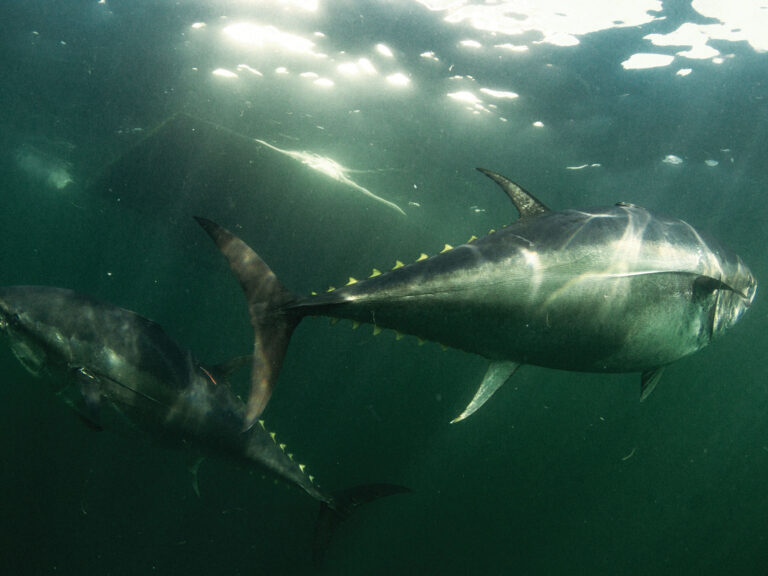Gulf Senators file Gulf of Mexico Red Snapper Conservation Act of 2013
Senators Mary Landrieu (D-La.) and Roger Wicker (R-Miss.) filed legislation recently to transfer responsibility for the management of Gulf red snapper to the Gulf states. The legislation (S.1161) comes two months after the governors of four Gulf states released a joint letter to the leadership of the U.S. House and Senate stating that federal management of Gulf red snapper is “irretrievably broken,” and calling for a coordinated Gulf states partnership for red snapper management.
“The red snapper fishery is tremendously complicated and has lurched from crisis to crisis under federal management with no end in sight,” said Chester Brewer, chairman of the National Government Relations Committee for Coastal Conservation Association. “We commend Sen. Landrieu for taking the lead to work through the complexity of this issue. She invested a great deal of time to craft a balanced, workable solution that allows the Gulf States to develop a new management approach.”
Federal management of red snapper reached a new low in 2013 when the Gulf of Mexico Fishery Management Council announced the shortest season ever, even though the snapper population is booming. In response, Louisiana, Florida and Mississippi announced various actions to join Texas’ long-standing rejection of federal regulations in state waters, prompting federal authorities to implement punitive measures for those states.
Using an emergency rule process, the National Marine Fisheries Service reduced the recreational season to nine days off Louisiana and 12 days off Texas. Both states sued and a federal court overturned the action. The recreational season is now set at 28 days Gulf-wide.
“The reality is that federal fisheries management has a credibility problem. Red snapper has been under federal management for decades and our season this year is 28 days. No one should be satisfied with these results,” said Brewer. “We are grateful that Sen. Landrieu, Sen. Wicker and the Gulf governors heard the concerns of their citizens and pledged to find a better way.”
The **Gulf of Mexico Red Snapper Conservation Act (S.1161) **would establish a coordinated Gulf states partnership for red snapper management in which the states would fully comply with a management plan approved and adopted by the Gulf States Marines Fisheries Commission with minimal oversight from the federal government. The partnership would be similar to how striped bass are managed on the East Coast through the Atlantic States Marine Fisheries Commission.
“State-based fishery management has proven to be far more effective, and has engineered some of the greatest marine conservation victories in the country,” said Brewer. “We have faith in the states to be philosophically capable of not only conserving and managing robust fisheries, but also providing greater access to those resources for their citizens.”
A Unique Opportunity for Gulf Red Snapper
In a letter to the Gulf of Mexico Fishery Management Council, Coastal Conservation Association cites the new red snapper stock assessment as an opportunity for federal managers to fix the mistakes of the recent past by allocating the entire available increase in red snapper annual catch limits to the recreational sector.
“Though this action will not account for the harm that federal mismanagement of the red snapper resource has imposed on anglers across the Gulf, it will begin to repair the damage and begins to recognize the needs and potential of the recreational sector,” said Chester Brewer, chairman of CCA’s National Government Relations Committee.
While the shortest recreational red snapper seasons on record have cost jobs and revenue for Gulf Coast economies, the commercial sector has thrived under its catch share program in which a handful of businesses own the right to harvest 51 percent of the annual quota of red snapper in the Gulf. The greatly expanded catch limits that have been proposed present a unique opportunity for the Gulf Council to also address the outdated allocation of red snapper, which was last set in the mid-1980s. A report by Gentner Consulting Group that looked at the increase in potential economic value and total sales from allocating 75 and 100 percent of the increases available makes an overwhelming case for the recreational sector.
The Gulf Council’s Science and Statistical Committee has endorsed an annual catch limit (ACL) of 13.5 million pounds of red snapper for 2013, an 11.9 million pound ACL for 2014 and a 10.6 million pound ACL for 2015. However, CCA is advocating that the Council average the ACL at 12 million pounds for the next three years to avoid the “yo-yo” regulations that have characterized the fishery in the recent past.
“The track record speaks for itself – we don’t believe the federal government has the ability to manage this fishery with any degree of accuracy or reliability. Averaging the increase to 12 million pounds over the next three years presents the best opportunity for stability in this fishery for the first time in a very long time,” said Brewer. “Ironically, the recreational sector has been criticized repeatedly and vigorously for not being ‘accountable.’ The lack of accountability seems to lie with the federal management regime that has forced the most severely limited fishing seasons ever seen in the Gulf of Mexico that we now see were largely not based on good science.”









